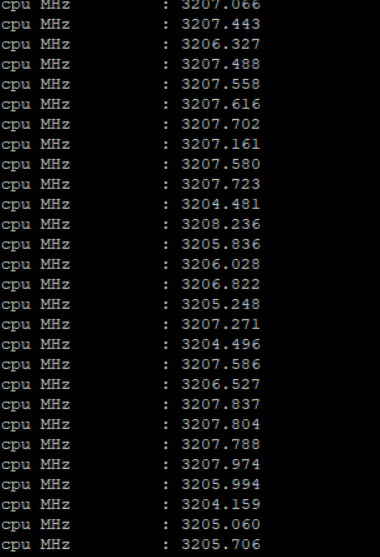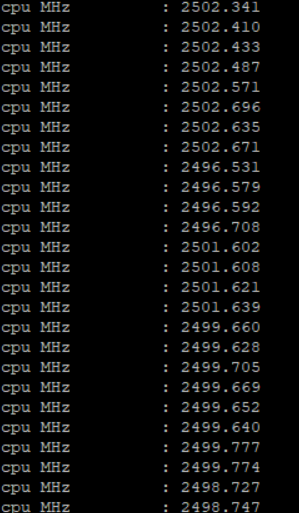AMD Rome Second Generation EPYC Review: 2x 64-core Benchmarked
by Johan De Gelas on August 7, 2019 7:00 PM ESTMulti-core SPEC CPU2006
For the record, we do not believe that the SPEC CPU "Rate" metric has much value for estimating server CPU performance. Most applications do not run lots of completely separate processes in parallel; there is at least some interaction between the threads. But since the benchmark below caused so much discussion, we wanted to satisfy the curiosity of our readers.
| 2P SPEC CPU2006 Estimates | ||||||
| Subtest | Xeon 8176 |
EPYC 7601 |
EPYC 7742 |
EPYC 7742 |
Zen2 vs Zen1 |
EPYC 7742 Vs Xeon |
| Cores | 56C | 64C | 128C | |||
| Frequency | 2.8 G | 2.7G | 2.5-3.2G | 2.5-3.2G | ||
| GCC | 7.4 | 7.4 | 7.4 | 8.3 | 7.4 | 7.4 |
| 400.perlbench | 1980 | 2020 | 4680 | 4820 | +132% | +136% |
| 401.bzip2 | 1120 | 1280 | 3220 | 3250 | +152% | +188% |
| 403.gcc | 1300 | 1400 | 3540 | 3540 | +153% | +172% |
| 429.mcf | 927 | 837 | 1540 | 1540 | +84% | +66% |
| 445.gobmk | 1500 | 1780 | 4160 | 4170 | +134% | +177% |
| 456.hmmer | 1580 | 1700 | 3320 | 6480 | +95% | +110% |
| 458.sjeng | 1570 | 1820 | 3860 | 3900 | +112% | +146% |
| 462.libquantum | 870 | 1060 | 1180 | 1180 | +11% | +36% |
| 464.h264ref | 2670 | 2680 | 6400 | 6400 | +139% | +140% |
| 471.omnetpp | 756 | 705 (*) | 1520 | 1510 | +116% | +101% |
| 473.astar | 976 | 1080 | 1550 | 1550 | +44% | +59% |
| 483.xalancbmk | 1310 | 1240 | 2870 | 2870 | +131% | +119% |
We repeat: the SPECint rate test is likely unrealistic. If you start up 112 to 256 instances, you create a massive bandwidth bottleneck, no synchronization is going on and there is a consistent CPU load of 100%, all of which is very unrealistic in most integer applications.
The SPECint rate estimate results emphasizes all the strengths of the new EPYC CPU: more cores, much higher bandwidth. And at the time it ignores one of smaller disadvantages: higher intercore latency. So this is really the ideal case for the EPYC processors.
Nevertheless, even if we take into account that AMD has an 45% memory bandwidth advantage and that Intel latest chip (8280) offers about 7 to 8% better performance, this is amazing. The SPECint rate numbers of the EPYC 7742 are - on average - simply twice as high as those of the best available socketed Intel Xeons.
Interestingly, we saw that most rate benchmarks ran at P1 clock or the highest p-state minus one. For example, this is what we saw when running libquantum:
While some benchmarks like h264ref were running at lower clocks.
The current server does not allow us to do accurate power measuring but if the AMD EPYC 7742 can stay within the 225W TDP while running integer workloads at all cores at 3.2 GHz, that would be pretty amazing. Long story short: the new EPYC 7742 seems to be able to sustain higher clocks than comparable Intel models while running integer workloads on all cores.












180 Comments
View All Comments
close - Thursday, August 8, 2019 - link
VMware licenses per socket. I'm not sure what kind of niche market one would have to be in (maybe HPC on Windows with the HPC Pack?) to run Win server bare metal on this thing. So I'm pretty sure the average cores/VM for Windows servers is relatively low and no reason for concern.schujj07 - Thursday, August 8, 2019 - link
@deltaFx2 Most people purchase more cores than they currently need so that they can grow. In the long run it is cheaper to purchase a higher SKU right now than purchase a second host a year down the road.@close There are companies that are Windows only so they would install Hyper-V onto this host to use as their hypervisor. However, even under VMware if you want to license Windows as a VM you have to pay the per-core licensing for every CPU core on each VM. I looked into getting volume licensing for Server 2016 for the company I work for we have 2 hosts with dual 24 core Epyc 7401's and we would need to get 16 dual core license packs for each instance of Server 2016. It ended up that we couldn't afford to get Sever 2016 because it would have cost us $5k per instance of Server 2016.
DigitalFreak - Thursday, August 8, 2019 - link
@schujj07 Just buy a Windows Server Datacenter license for each host and you don't have to worry about licensing each VM.schujj07 - Thursday, August 8, 2019 - link
AFAIK it doesn't work that way when you are running VMware. With VMware you will still have to license each one.wolrah - Thursday, August 8, 2019 - link
@schujj07 nope. Windows Server licensing is the same no matter which hypervisor you're using. Datacenter licenses allow unlimited VMs on any licensed host.diehardmacfan - Thursday, August 8, 2019 - link
This is correct. You do need to buy the licenses to match the core count of the hypervisor, however.Dug - Friday, August 9, 2019 - link
You still have to pay for cores on datacenter. Each datacenter license covers 2 cores with a minimum purchase of 8. So over 8 cores and you are buying more licenses. 64 cores is about $25kMDD1963 - Friday, August 9, 2019 - link
Windows license (Standard or Datacenter) covers 2 *sockets* for, a total of 16 cores....; if you have more than 2 sockets, you need more licenses...; if you have 2 sockets, filled with 8 core CPUs, you are good with one standard license... If you have 20 total cores, you need a standard license, and a pair of '2 core' add ons... If you have 32 cores, you need 2 full standard licenses....MDD1963 - Friday, August 9, 2019 - link
Datacenter is still licensed for 16 cores, with little 2 pack increments available, or, in the case of a 64 core CPU, effectively 4 Datacenter licenses would be required...($6k per 16 cores, or, roughly $24k)deltaFx2 - Friday, August 9, 2019 - link
@schujj07: Of course I get that. The OP @Pancakes implied that Rome was going to hurt the wallets of buyers using windows server. The implication being this would not happen if they bought Intel. I was questioning those assumptions. How can Rome cost more money for windows licenses unless rome needs more cores to get the same job done or enterprises overprovision Rome (in terms of total cores) vs. Intel. That would make sense if the per-thread performance is worse but it's not.